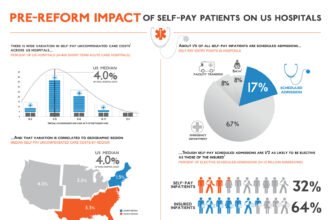Of all the people in the health care system, none is more central than the physician. Fundamental reform that lowers costs, raises quality and improves access to care is almost inconceivable without physicians leading and directing the changes. Yet of all the actors in modern health care, none are more trapped than our nation’s doctors. Let’s consider just a few of the ways your doctor is constrained, unlike any other professional you deal with.
Of all the people in the health care system, none is more central than the physician. Fundamental reform that lowers costs, raises quality and improves access to care is almost inconceivable without physicians leading and directing the changes. Yet of all the actors in modern health care, none are more trapped than our nation’s doctors. Let’s consider just a few of the ways your doctor is constrained, unlike any other professional you deal with.
No Telephone. Sometime in the early part of the last century, all the other professionals in our society — lawyers, accountants, architects, engineers, etc. — discovered the telephone. It’s a handy device. Ideal for communicating with clients. Yet even today I find that I can rarely talk to a doctor by phone. Why is that?
The short answer is: Medicare doesn’t pay for telephone consultations. Medicare has a list of about 7,500 tasks it pays physicians to perform. And talking by phone isn’t on the list — at least in a way that makes it practical. Private insurance tends to pay the way Medicare pays. So do most employers.
At a time when doctors feel like they are being squeezed on their fees from every direction by third-party payers, most become very focused on which activities are billable and which are not. And most are going to try to minimize their non-billable time.
And now my life has changed in oh so many ways,
My independence seems to vanish in the haze.
No E-Mail. Sometime toward the end of the last century, all the other professionals discovered e-mail. In some ways it’s even better than the phone. Everybody e-mails everybody these days. Even the corner liquor store e-mails me when they have a bottle of wine they know I will like. Everybody e-mails everybody — except doctors.
Why is that? Again, the short answer is: this is another task that’s not on Medicare’s price list — at least not in any way that makes e-mailing practical. Since Medicare doesn’t pay, all the private insurers who piggyback on Medicare’s payment system follow suit.
The fact that patients cannot conveniently consult with physicians leads to two bad consequences. First, the unnecessary office visitors (say, patients who have a cold) expect at least a prescription in return for their investment of waiting time, and all too often the drug will be an antibiotic that won’t help their cold. Were e-mail or telephone consultations possible, the physician might recommend an over-the-counter remedy, thus avoiding the cost of waiting for the patient and the cost of degrading the effectiveness of antibiotics for society as a whole.
At the same time, rationing by waiting at the doctor’s office imposes disproportionate costs on chronic patients who need more contact with physicians. This might be one reason why so many are not getting what they most need from primary care physicians and what is most likely to prevent more costly problems later on: prescription drugs.
The ability to consult with doctors by phone or e-mail could be a boon to chronic care. Face-to-face meetings with physicians would be less frequent, especially if patients learned how to monitor their own conditions and manage their own care.
Lack of Electronic Medical Records. The computer is ubiquitous in our society and many believe that electronic medical record (EMR) systems have the capacity to improve quality and greatly reduce medical errors. Yet, only about half of physicians have such systems and most of those are not connected to other physicians’ offices and hospitals, do not allow electronic prescribing, etc. The same is true for hospitals. One study concluded that “information systems in more than 90 percent of U.S. hospitals do not even meet the requirement for a basic electronic-records system.” Why are most medical records still stored on paper? Again, the short answer is this: There is no financial incentive to do otherwise.
EMRs may improve quality, but in the third-party-payer system, doctors do not compete for patients based on quality. EMRs may be a boon for patient convenience — especially in transferring information from doctor to doctor, but physicians don’t get paid for increasing patient convenience.
The Kaiser Exception. There is one health plan that does make extensive use of the telephone, e-mail and electronic medical records (EMRs). The insurer is California-based Kaiser Permanente. Unlike most private insurers, Kaiser doesn’t pay for care the way Medicare pays. Instead, it employs most of its doctors in a health maintenance organization (HMO) model. Because the plan is responsible for all the health care costs of its enrollees, it has an incentive to make use of technology that reduces overall cost. Telephone, e-mail and EMRs are among these. HMOs have their own perverse incentives, however, and some of Kaiser’s less attractive outcomes have been chronicled by Harvard Business School Professor Regina Herzlinger.
Ironically, the tax law favors the HMO form of delivery (because all premiums an employer pays to Kaiser are paid with pre-tax dollars) and has traditionally discriminated against individual self-insurance. However, the HMO doctor is no more free than the fee-for-service doctor. Both are trapped — although in different systems.
Inadequate Advice About Drugs and Other Therapies. Why do doctors so often prescribe brand-name drugs and fail to tell patients about generic, therapeutic, and over-the-counter substitutes? Why do they typically not know the price of the drugs they prescribe or the costs of alternatives? Even when they are vaguely aware of cost differences, why does your doctor not know where you can get the best price in your area for the drug she prescribes? Once again, the short answer is: They do not get paid to know these things. Knowing the current best price, knowing where the patient can obtain that price, and knowing the prices and availabilities of all of the alternatives is demanding and time consuming. For the doctor, it is time that is not compensated.
Inadequate Patient Education. Numerous studies have shown that chronic patients can often manage their own care, with lower costs and as good or better health outcomes than with traditional care. Diabetics, for example, can monitor their own glucose levels, alter their medications when needed, and reduce the number of trips to the emergency room (ER). Similarly, asthmatics can monitor their peak airflows, adjust their medications and also reduce ER visits.
To take full advantage of these opportunities, however, patients need training that they rarely receive. ER doctors could save themselves and future doctors the necessity of a lot of future ER work if they took the time to educate the mother of a diabetic or asthmatic child about how to monitor and manage the child’s health care. But time spent on such education is not billable.
Escaping the Trap. What is the common denominator for all of these problems? Unlike other professionals, doctors are not free to repackage and reprice their services in customer pleasing ways. The way their services are packaged is dictated by third-party-payer bureaucracies. The prices they are paid are similarly dictated. Doctors are the least free of any professional we deal with. Yet these un-free actors are directing one-fifth of all consumer spending!






